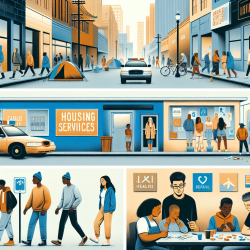Introduction
The recent research article, "History Repeating—How Pandemics Collide with Health Disparities in the United States," provides a comprehensive analysis of how pandemics exacerbate existing health disparities. This blog aims to help practitioners in the field of special education and therapy services understand these disparities and apply the research outcomes to improve their practice.
Understanding Health Disparities in Pandemics
The COVID-19 pandemic, much like the 1918 Influenza and the 2009 H1N1 pandemics, has highlighted significant health disparities in the United States. These disparities are often rooted in socioeconomic status, race, and access to healthcare. For instance, during the 1918 pandemic, African Americans experienced lower mortality rates compared to Whites, a phenomenon attributed to various social and environmental factors.
In contrast, during the COVID-19 pandemic, minority groups such as Black, Hispanic, and Native American populations have faced higher infection, hospitalization, and death rates compared to non-Hispanic Whites. These disparities are compounded by pre-existing health conditions, socioeconomic factors, and barriers to healthcare access.
Implications for Practitioners
Practitioners can take several steps to address these disparities:
- Enhance Awareness: Understanding the historical context of health disparities can help practitioners develop more culturally sensitive approaches to care.
- Advocate for Equitable Access: Practitioners should advocate for policies that ensure equitable access to healthcare resources, including vaccines and treatment options, for minority and disadvantaged communities.
- Engage in Community Outreach: Building trust within communities through outreach programs can help reduce vaccine hesitancy and improve health outcomes.
- Implement Data-Driven Approaches: Utilizing data to identify and address specific needs within communities can lead to more targeted and effective interventions.
Encouraging Further Research
Practitioners are encouraged to engage in further research to explore the complex interplay between pandemics and health disparities. Understanding these dynamics can lead to the development of innovative solutions to mitigate the impact of future pandemics on vulnerable populations.
Conclusion
Addressing health disparities during pandemics requires a multifaceted approach that includes awareness, advocacy, community engagement, and data-driven strategies. By applying the lessons learned from past pandemics, practitioners can play a crucial role in promoting health equity and improving outcomes for all communities.
To read the original research paper, please follow this link: History Repeating—How Pandemics Collide with Health Disparities in the United States.










